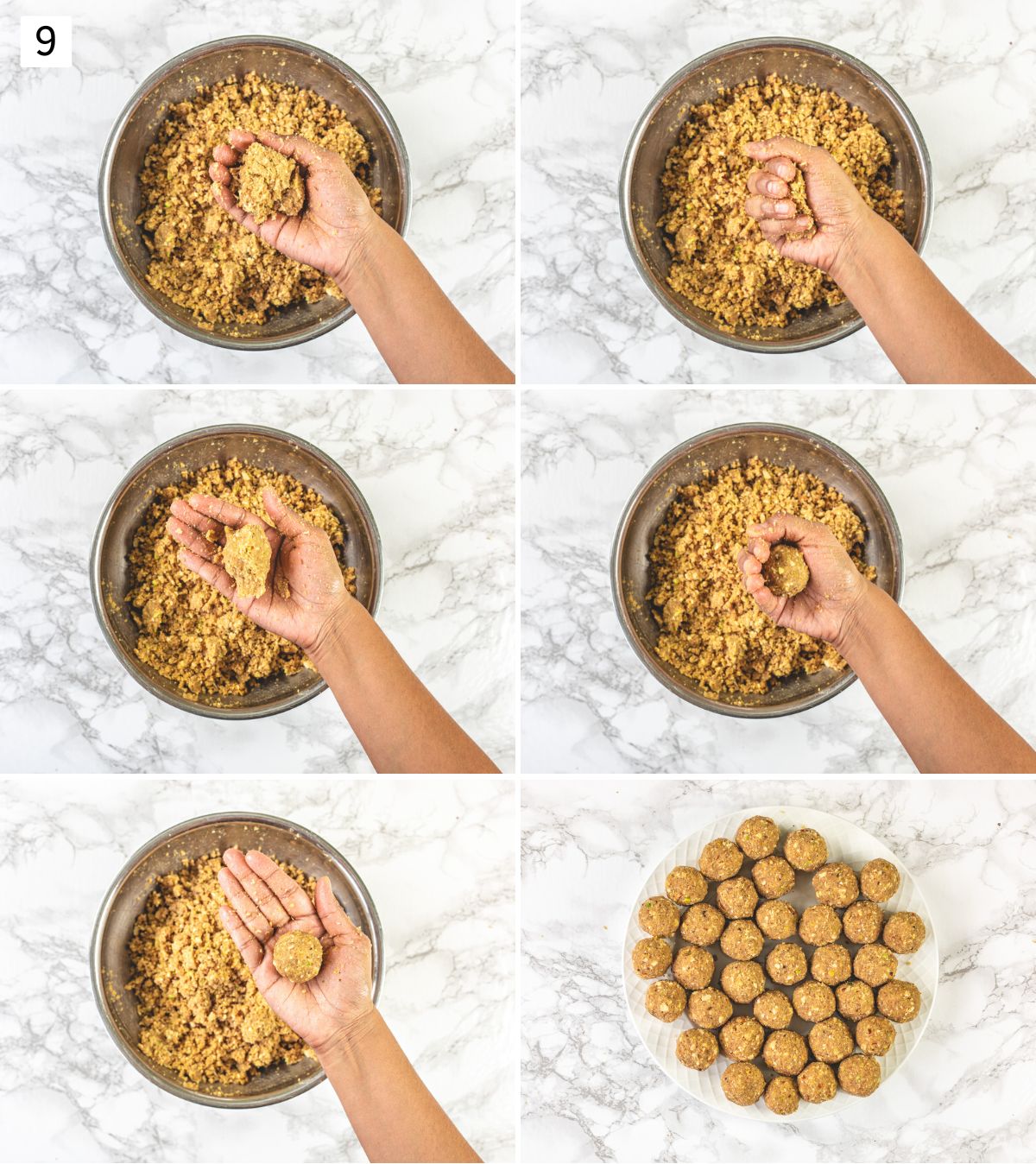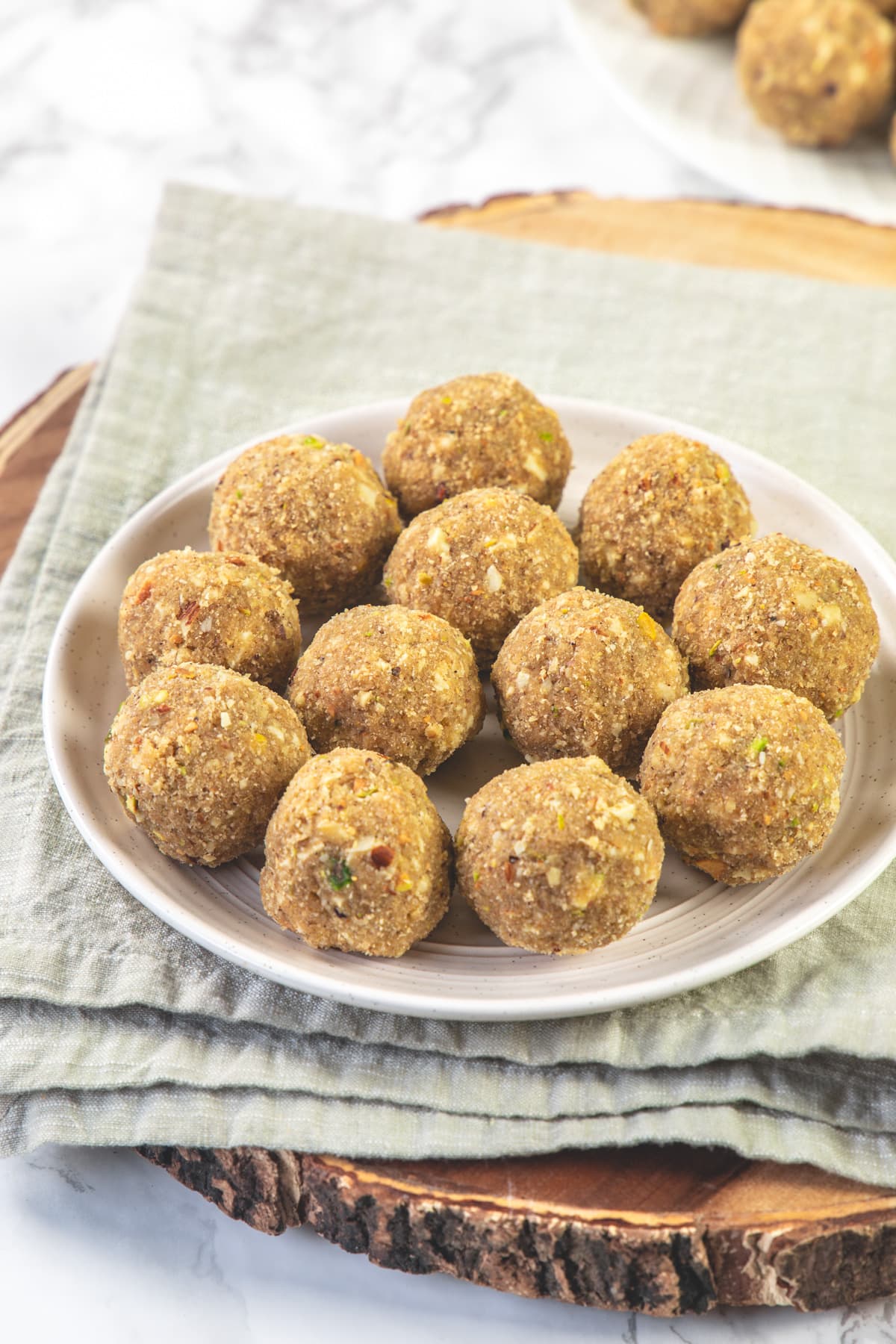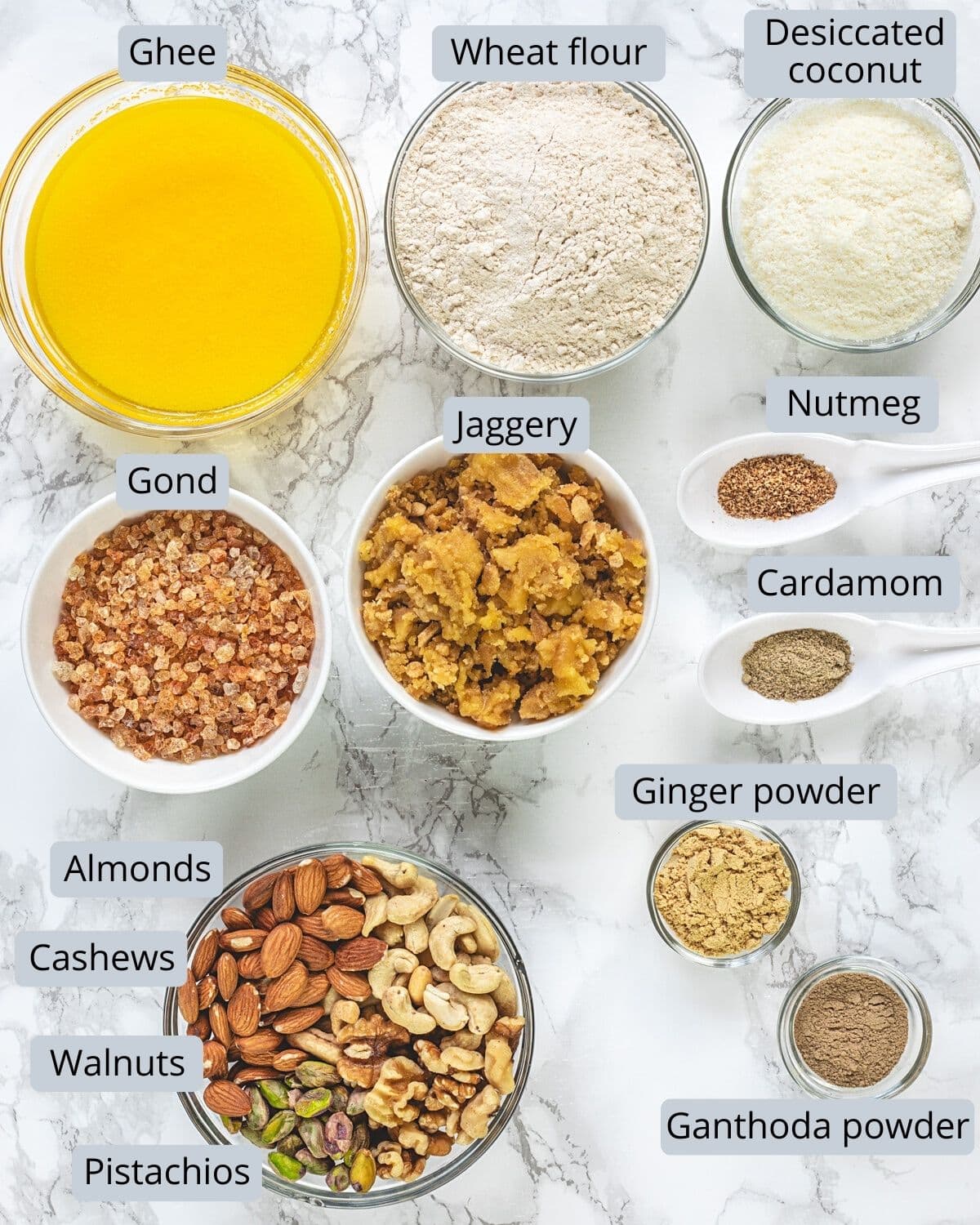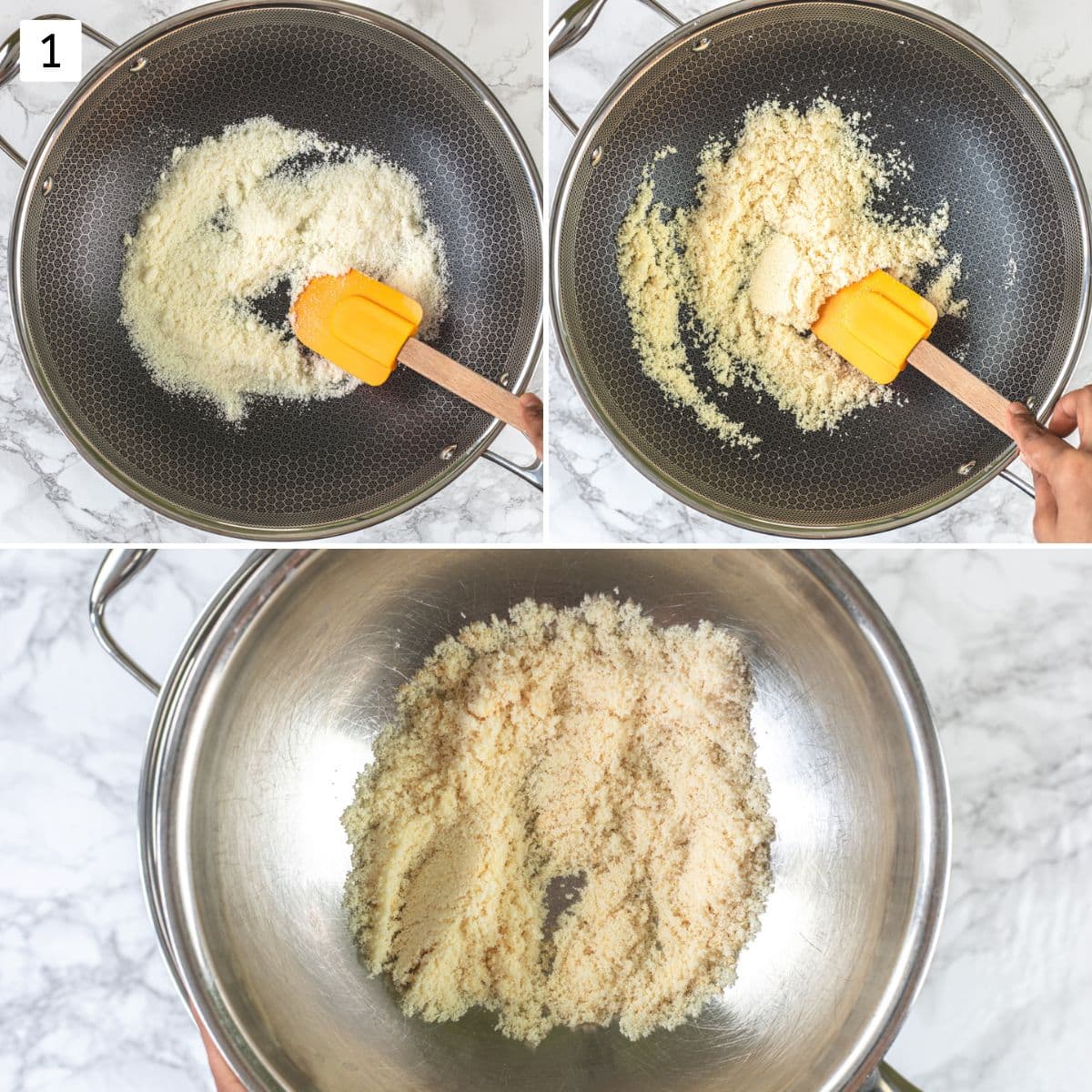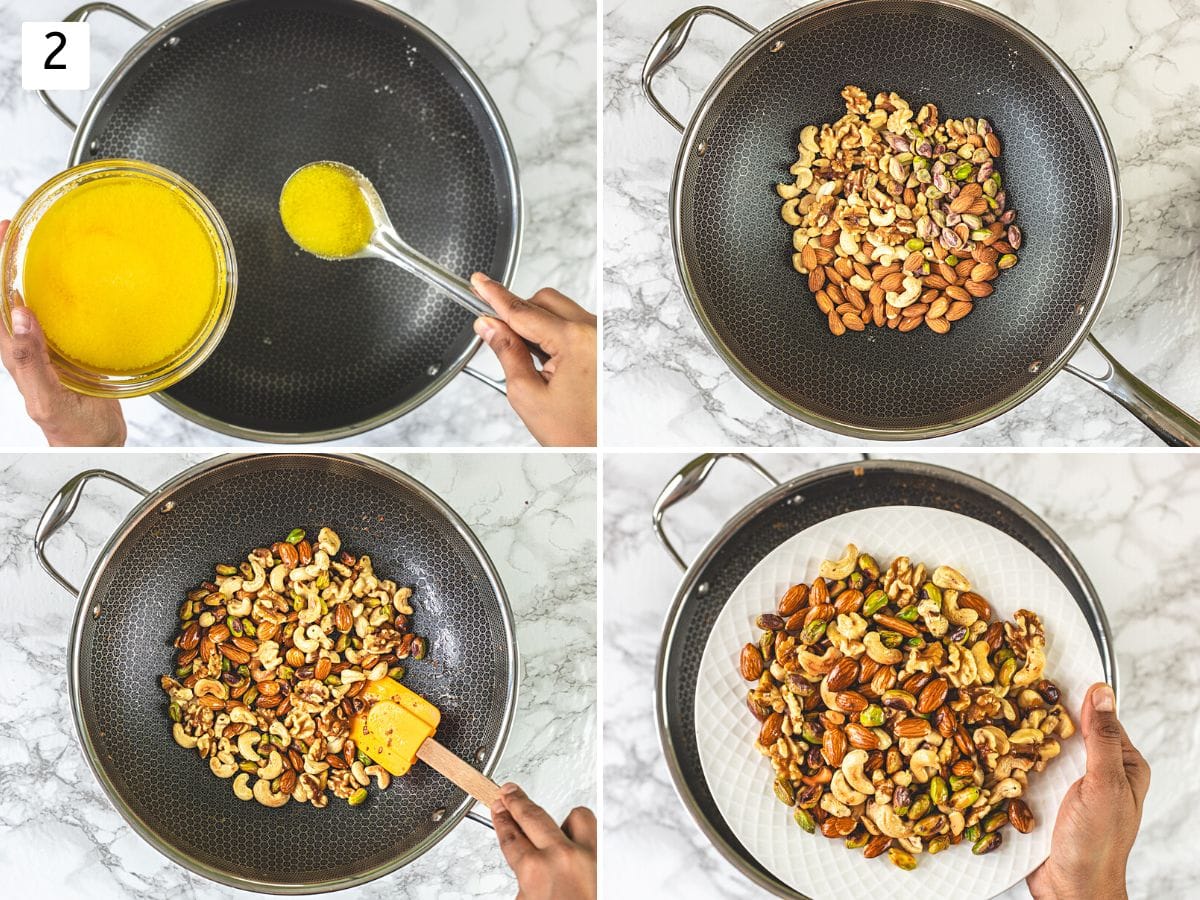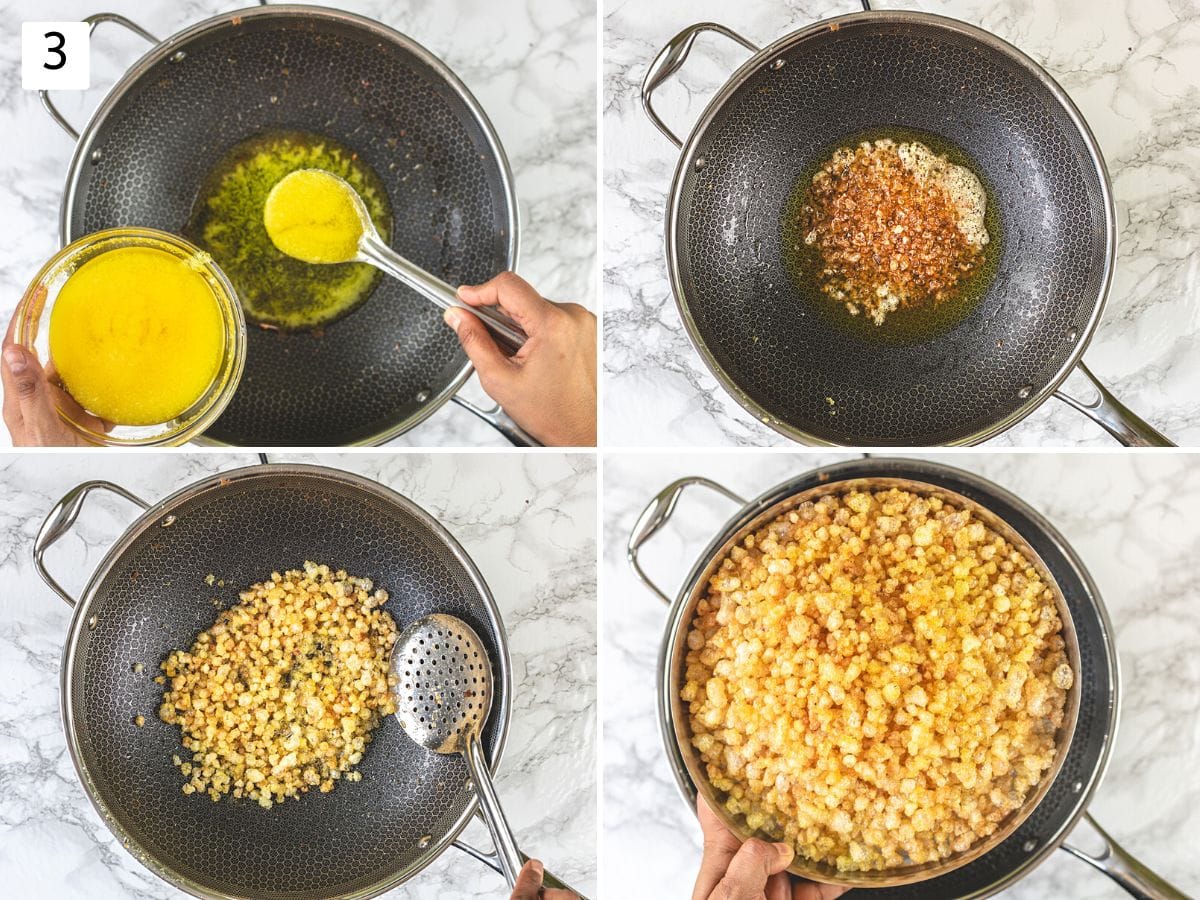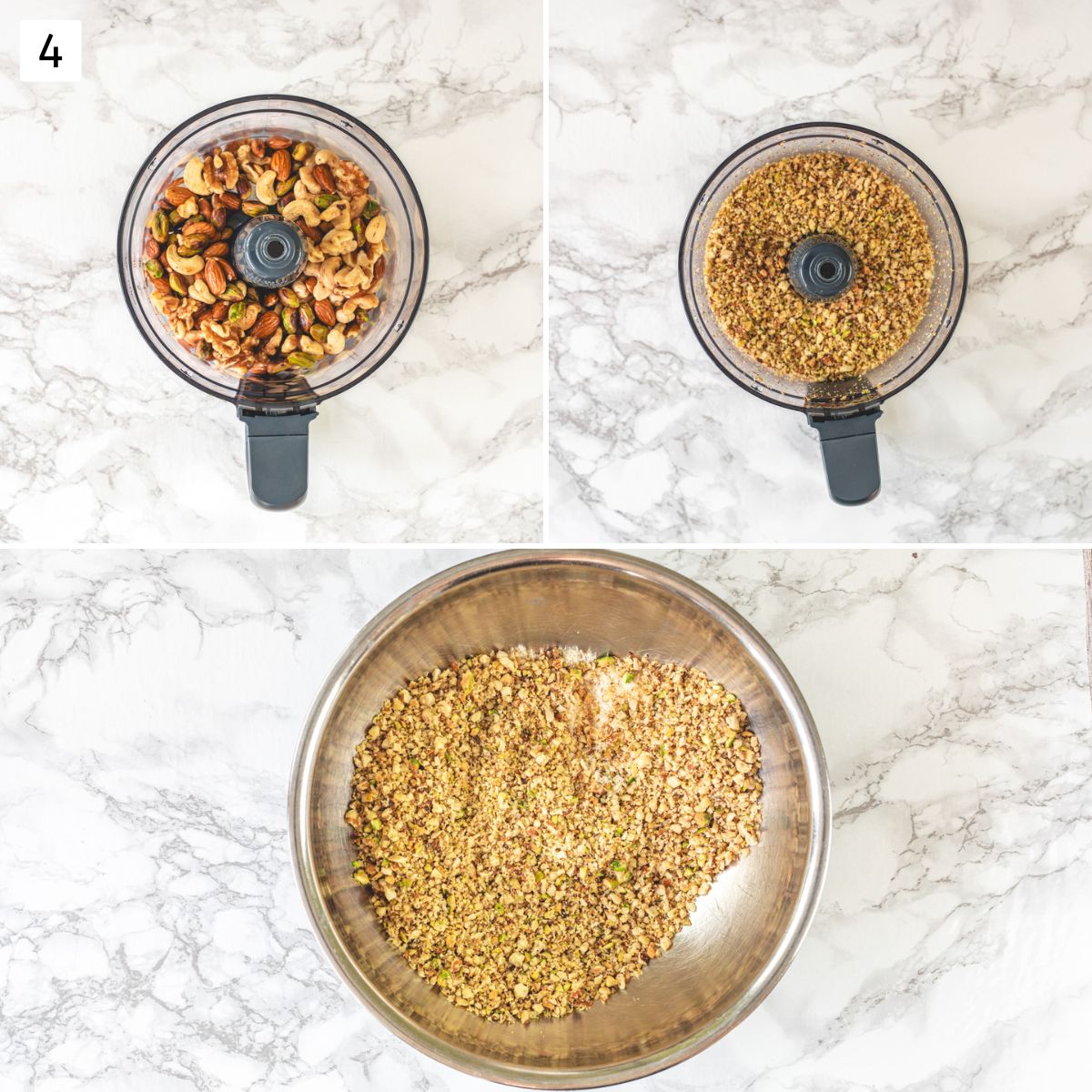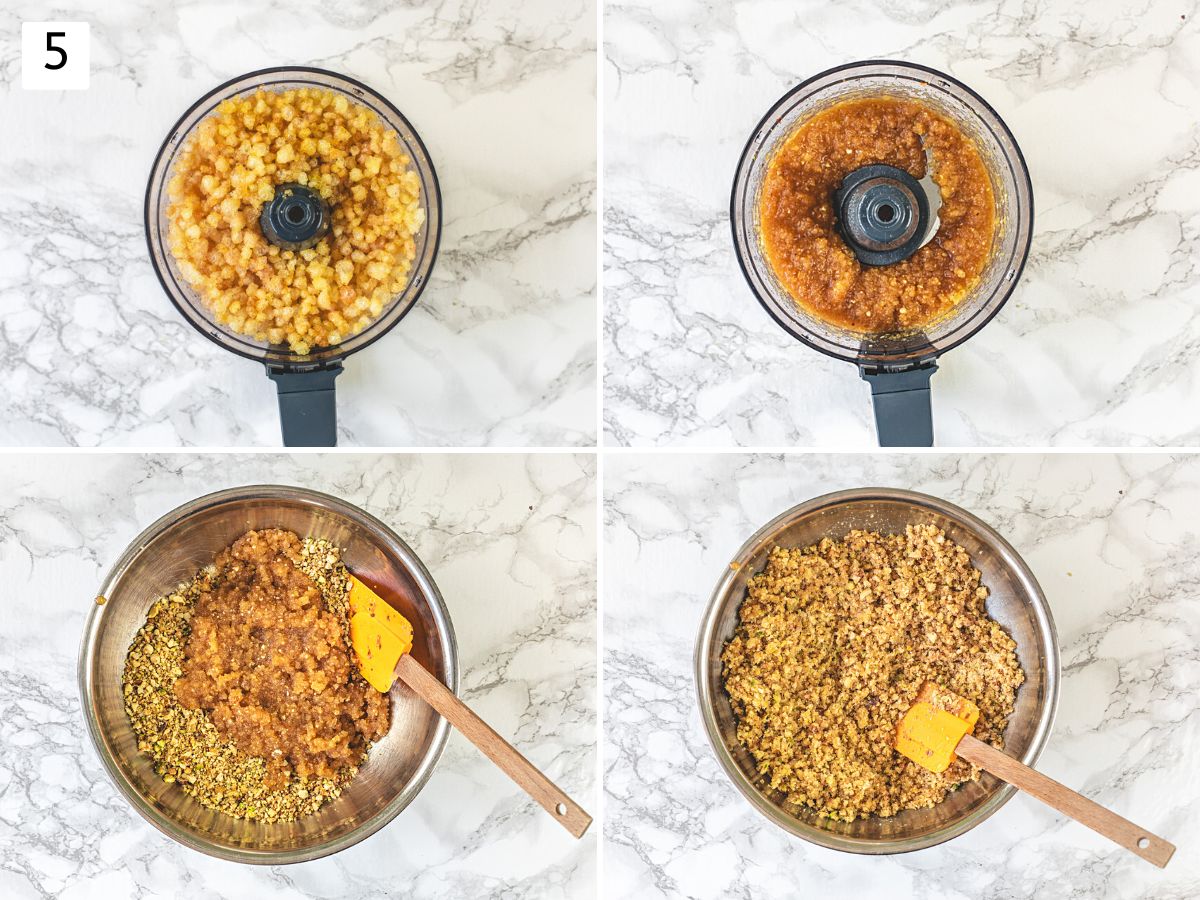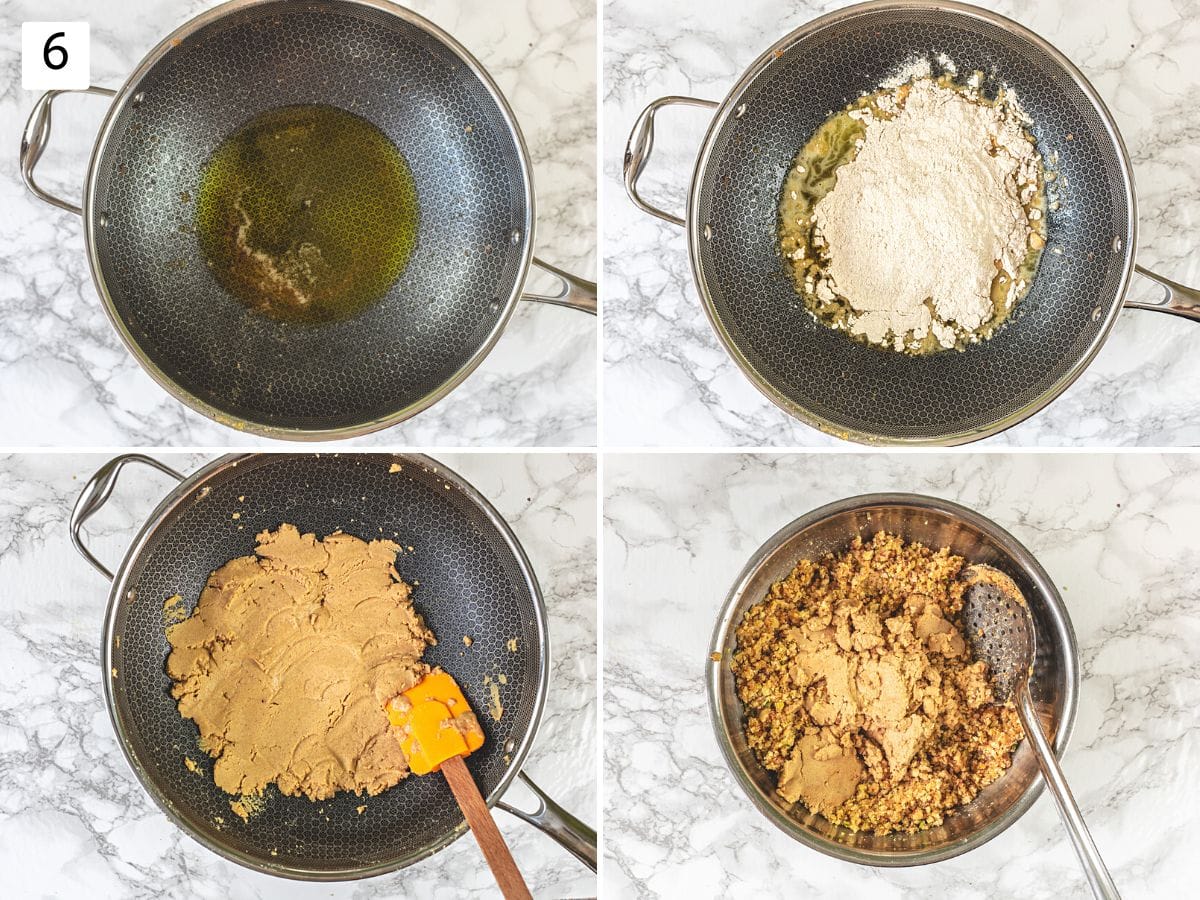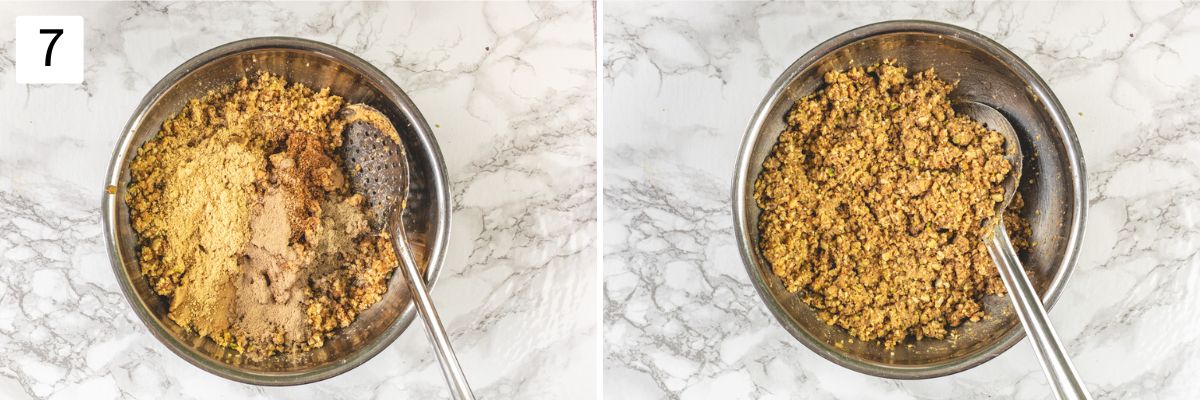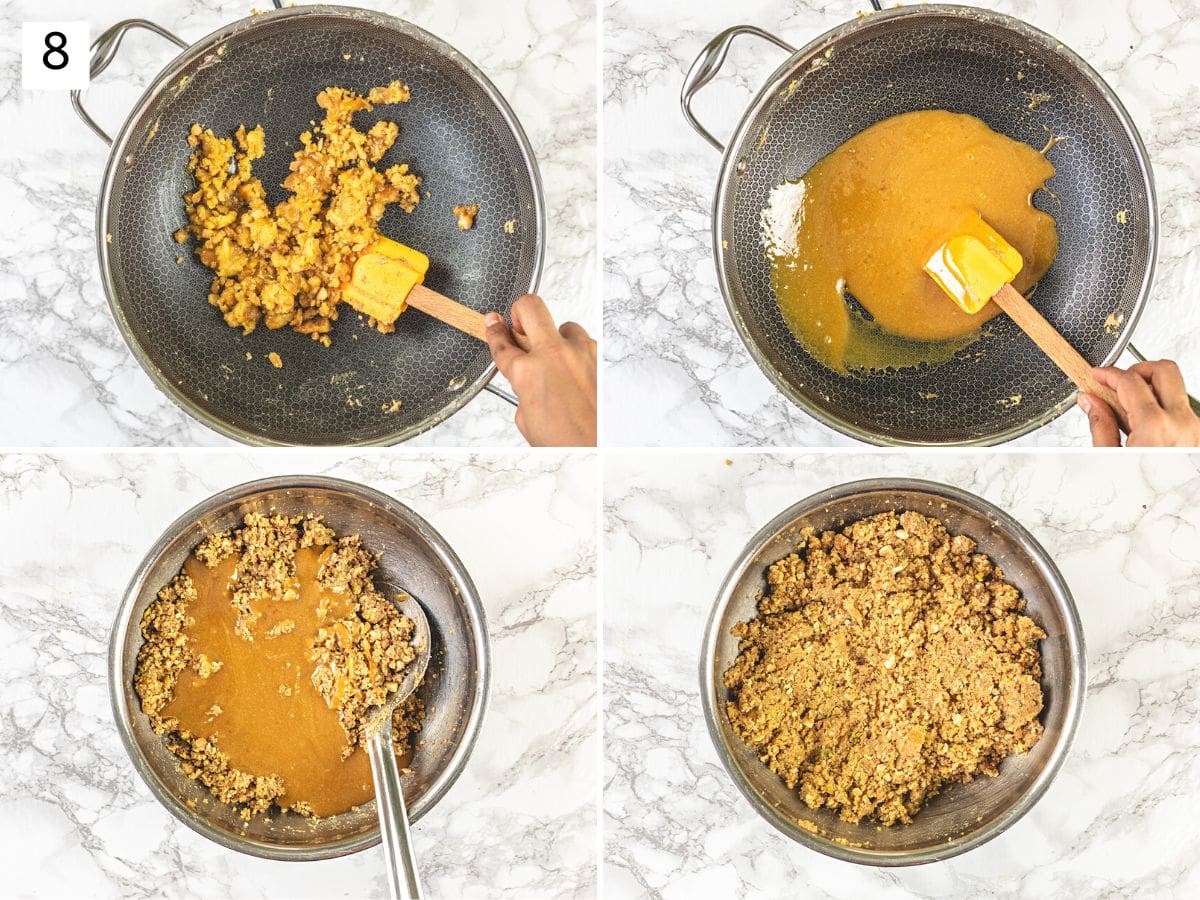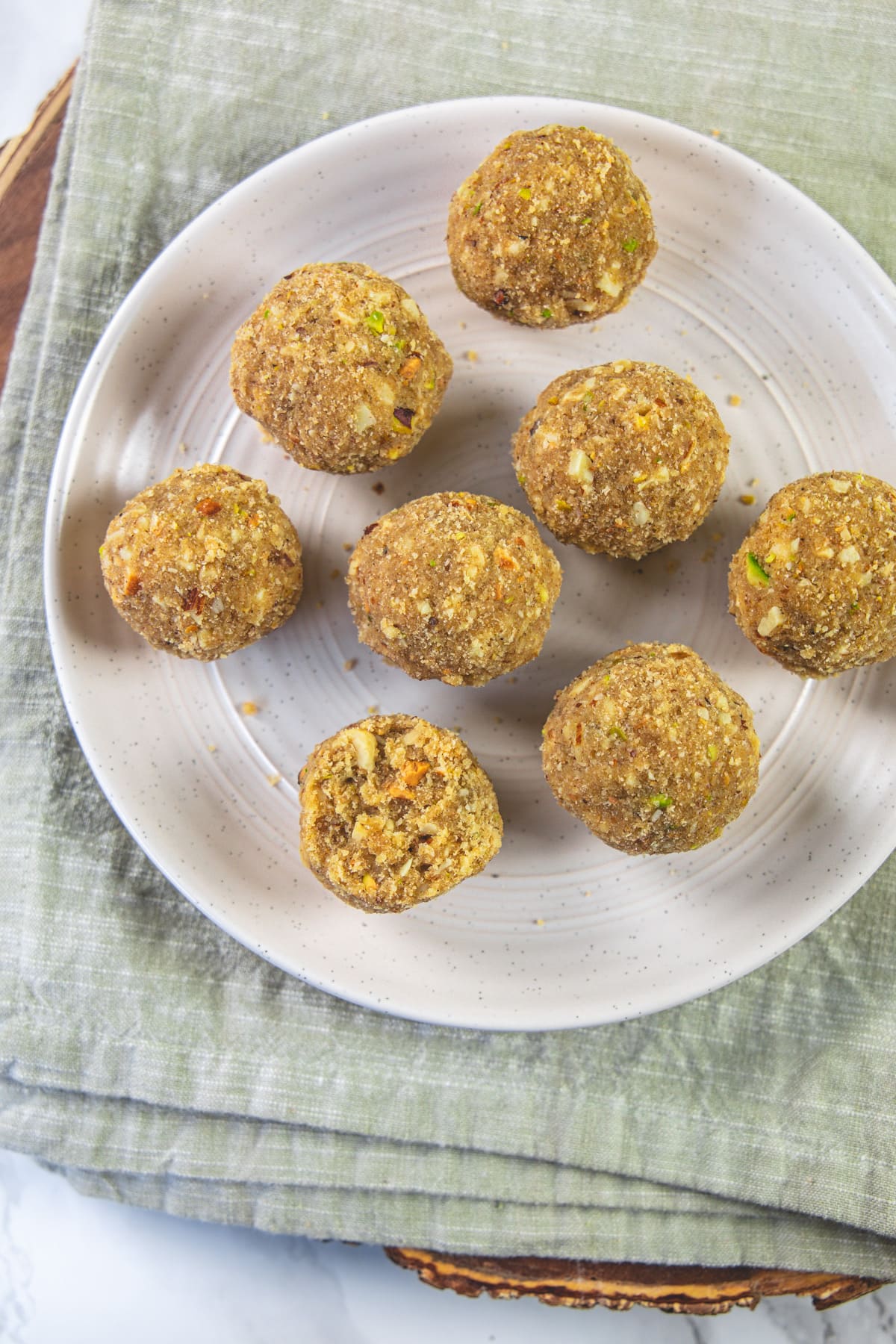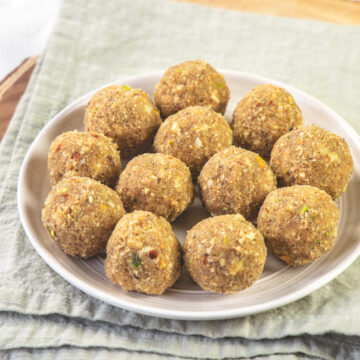What Is Gond?
Gond, known as edible gum, is a natural resin obtained from the sap of certain trees, particularly the Acacia species like Acacia senegal and Acacia arabica. The sap dries into small, translucent crystals or tears. Gond is primarily used in Indian cooking for its health benefits and culinary properties. There are two main types of gond: In different languages, these gums have various names. For instance, Gundar in Gujarati and Dink in Marathi.
❤️About Gond Ke Laddu Recipe
Serving Portion: Limit 1 ladoo per day. Over consumption will lead to weight gain as these gond ke laddu are calorie-dense.
Soft, melt-in-your-mouth kind texture Crunch of nuts in every bite. Just sweet (not overly sweet like dessert) Flavored with the right amount of spices.
Right Time To Consume:
Have this as a snack (between two main meals). Have it as a breakfast with a glass of milk. Eating as a dessert after a meal is not the right choice.
Gujarati-Style: I am sharing the Gujarati version of Gundar na Ladva. Instead of shaping it into ladoo, you can spread it in thali like burfi or sukhdi to make gundar pak. Different regional variations of Gond Ke Laddu might include ingredients like makhana (fox nuts), khuskhus (poppy seeds), or dried dates, each adding its unique flavor.
Health Benefits Of Gond:
Gond, or edible gum, is believed to offer several health benefits in traditional Ayurvedic practices. While scientific research on these claims is limited
Energy Boost: Gond is a rich source of energy and is often consumed during winter months to provide warmth and stamina. Joint Health: In Ayurveda, gond is thought to have anti-inflammatory properties and is sometimes used to promote joint health and alleviate conditions like arthritis. Digestive Health: Gond is believed to have mild laxative properties and may aid in improving digestion and relieving constipation. Postpartum Recovery: Gond is commonly included in traditional postpartum diets in some cultures. It is believed to help in the recovery of the mother’s strength and vitality after childbirth. Respiratory Health: Gond is thought to have a soothing effect on the respiratory system and is sometimes used in formulations to alleviate coughs and colds.
🧾 Ingredient Notes
Ghee: Use good quality ghee. I prefer to use homemade ghee made from Kerry Gold butter. It acts as a binding agent as well as a cooking medium. Desiccated Coconut: Traditionally dry coconut is grated and used in making these gond ke laddu. But to make prep work easy, we are using ready desiccated coconut. Nuts (Almonds, Cashews, Pistachios, Walnuts): I have used these four nuts. Choose whatever nuts you prefer. Gond (Edible Gum): It is easily available in any Indian grocery store. Choose the regular gond, not gond katira. Chapati Atta: This adds body and substance to the ladoos, absorbing the flavors of ghee and jaggery while providing a soft texture. Nutmeg: Always buy a pack of whole nutmeg and freshly grate it using a microplane zester as needed. It gives a fresh flavor and aroma. Ready powdered nutmeg loses its flavor quickly. Cardamom powder: Remove the seeds of green cardamoms and discard the green outer cover. Make a powder out of those seeds and use it. Dry ginger powder (Sonth): Always use fresh spices for the best flavor. Expired or old ground spices lose their aroma and flavor. Ganthoda powder: It is also known as Pippali mul or long pepper root powder. Jaggery (Kolhapuri): Do not use powdered jaggery or desi jaggery. Go for Kolhapuri jaggery that comes in blocks and grate or chop the required amount as needed.
👩🍳 How To Make Gond Ke Laddu? (Pics)
- Start by dry roasting the desiccated coconut until light brown, then transfer it to a large bowl.
- Take around 1-2 tablespoons of ghee in a pan and heat on medium heat. Once hot add nuts and roast until golden brown. Once done, transfer them to a plate.
- In the same pan, add ½ amount of remaining ghee. Once hot, fry the ground in batches until it puffs up completely. Drain and set aside on a plate. If needed add more ghee during the frying process.
- Process the nuts in a food processor until coarsely chopped, then mix with coconut.
- Next, add fried gond, grind it to a coarse paste, and mix with the nuts and coconut mixture.
- Heat the remaining ghee in the same pan. Once hot add wheat flour and roast the flour with stirring constantly until aromatic and golden brown. Add to the nut and gond mixture.
- Add nutmeg, sonth, ganthoda, and cardamom powder into the mixture and mix well.
- In the same pan, add jaggery and just melt it, ensuring it doesn’t boil or simmer. Add the melted jaggery to the mixture and combine.
- While the ladoo mixture is still warm, shape the mixture into ladoos. Let the ladoos set for a few hours before storing them in an airtight container.
💭 Expert Tips For PERFECT Gond Ke Laddu
Do not reduce the amount of ghee. You’ll need this amount of ghee to make the perfect ladoo. Be careful not to over-roast the nuts as they continue to cook with residual heat. Ensure the ghee is adequately hot before adding gond for even puffing. Make sure to fry the gond until it is puffed up nicely. Partially cooked gond will stick to your teeth while eating. Adjust the spice quantities according to your preference, especially if you’re sensitive to ginger or nutmeg. Avoid overheating the jaggery. It should just melt, not reach a syrupy consistency. If the mixture is too crumbly while forming ladoos, a little warm ghee can help bind it. Store Gond Ke Laddu in a cool, dry place. They remain fresh for up to a month at room temperature.
Did you try this recipe? I’d love to hear about it! Leave a review in the comment section below.
Bajra ladoo Sukhdi Chikki
